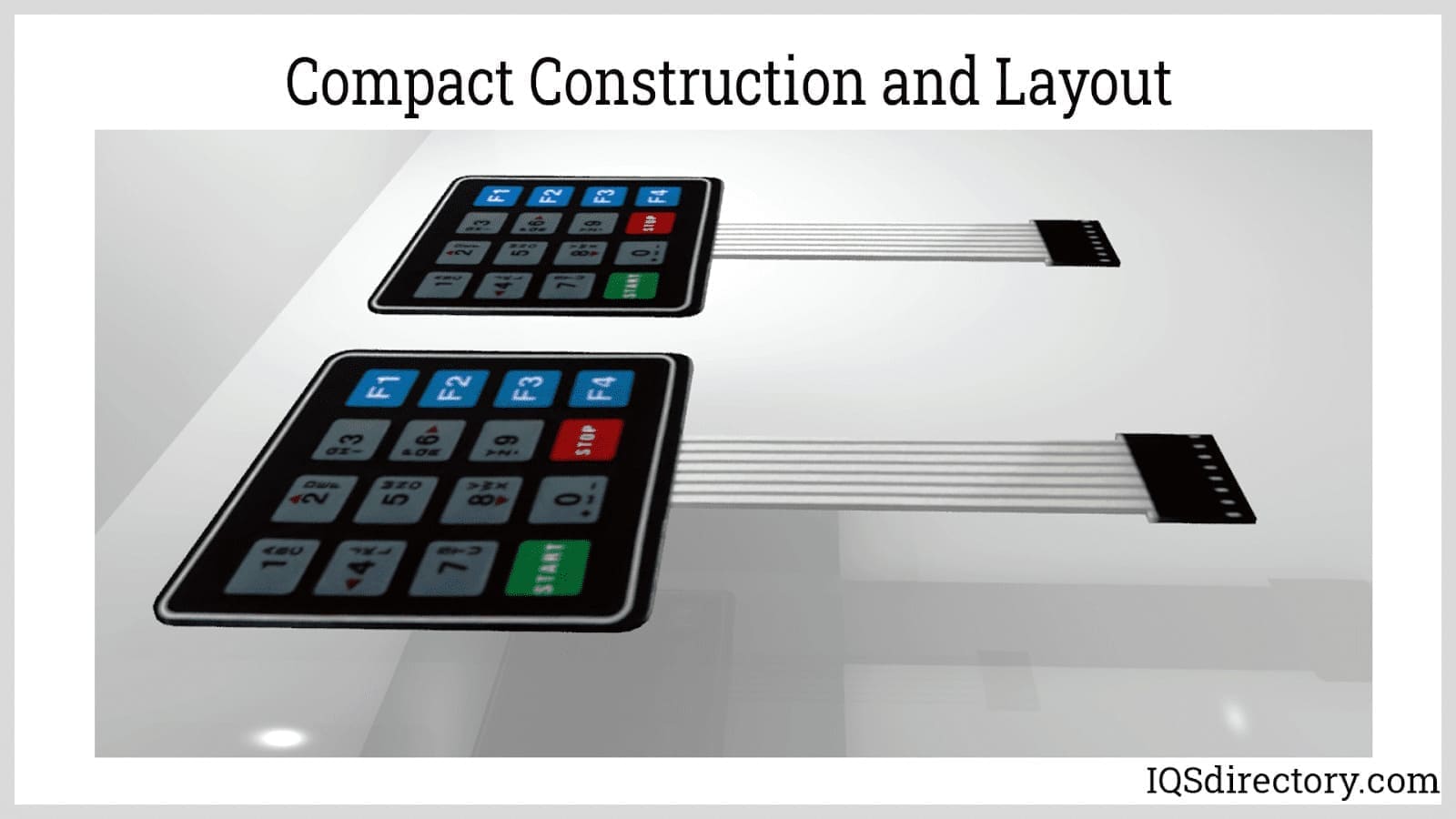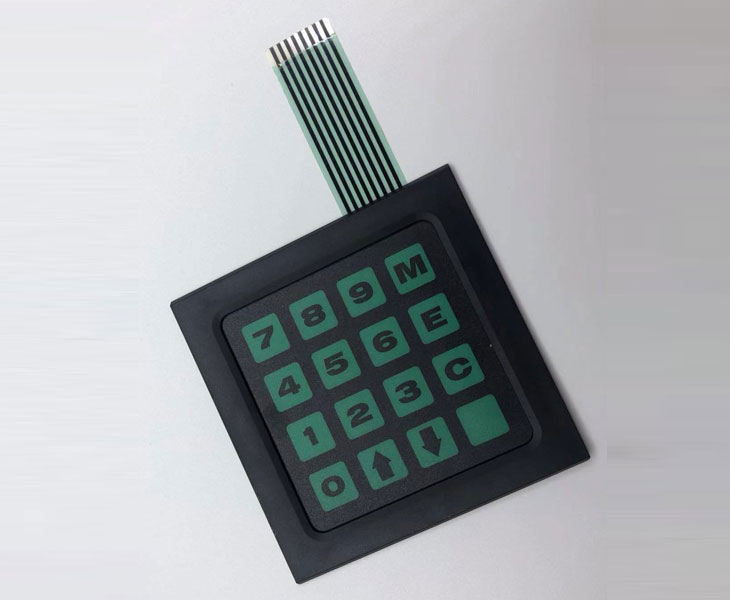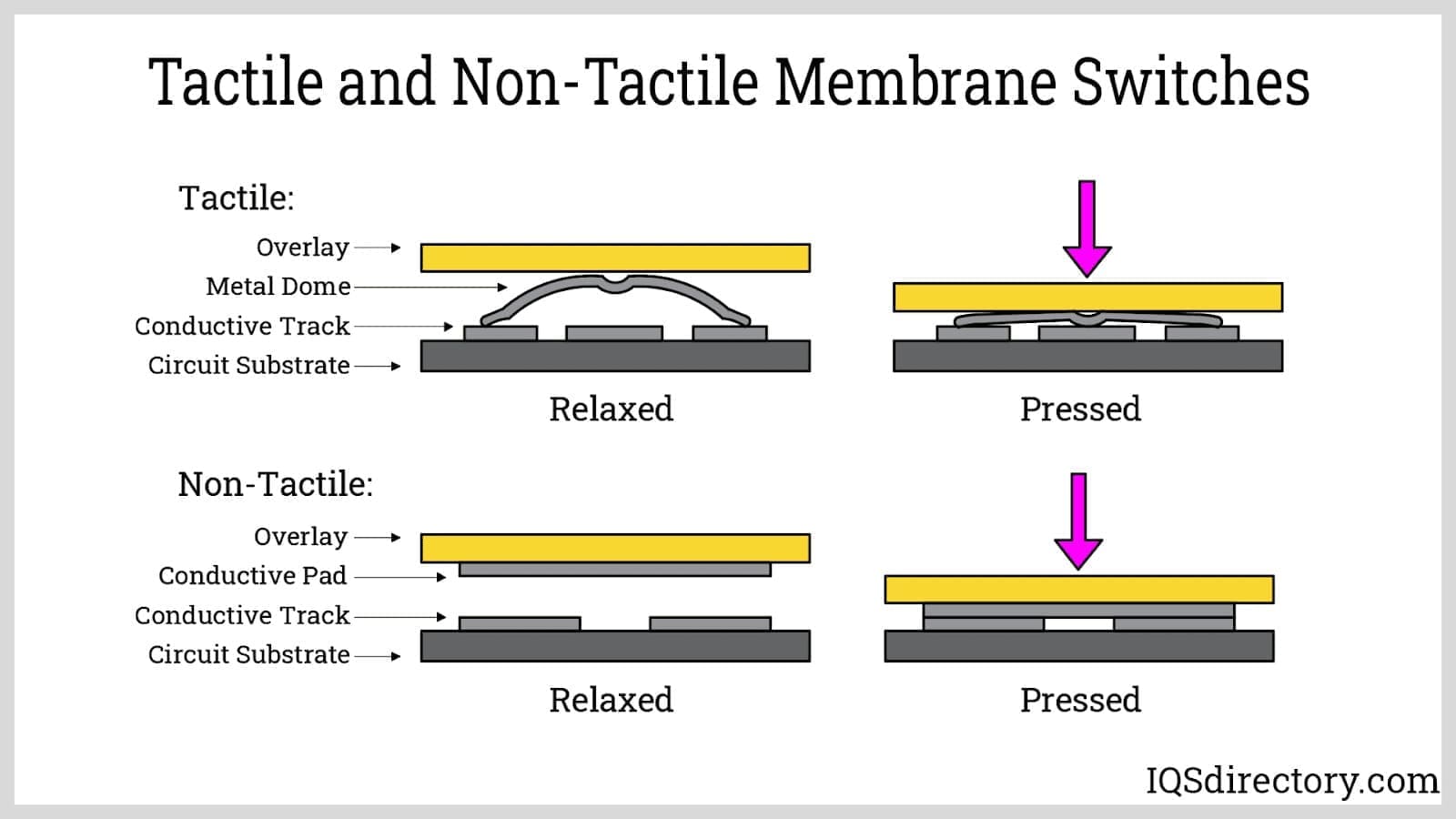How membrane switch is improving user interaction in medical devices
The Manufacturing Refine Behind Membrane Switch Over: What You Need to Know
The production process behind membrane layer switches combines mindful layout, material selection, and quality assurance. It begins with understanding the intricacies of membrane layer button style and advances through various stages, consisting of product choices and printing strategies. Each stage plays an important duty in guaranteeing performance and sturdiness. Nevertheless, the intricacies of layer construction and the rigorous screening standards may reveal insights that are not right away evident. What exists past these foundational aspects?
Recognizing Membrane Switch Style
Membrane buttons may appear basic at initial glimpse, their style includes intricate factors to consider that assure capability and longevity. The layout process starts with a detailed understanding of individual demands, consisting of the interface's desired application and ecological elements. Comfort designs is a crucial component, as the design has to assist in convenience of usage while making certain that tactile comments fulfills user expectations.Moreover, the layering of elements, such as graphic overlays, sticky layers, and conductive traces, have to be precisely engineered. membrane switch. This split setup not just influences the switch's responsiveness but additionally impacts its durability. Attention is provided to the sealing strategies employed to safeguard versus moisture and dust, which might jeopardize efficiency. Additionally, design factors to consider include aesthetics, where color pattern and aesthetic quality enhance user experience. Eventually, the layout of membrane layer switches over equilibriums capability, individual experience, and sturdiness, guaranteeing that they satisfy the needs of various applications effectively
Materials Utilized in Membrane Change Manufacturing
When picking materials for membrane layer switch manufacturing, it is necessary to consider both efficiency and durability. The primary products include polyester and polycarbonate movies, which provide adaptability and toughness. These movies are often coated with adhesive to guarantee proper bonding to substrates. Conductive inks, commonly composed of silver or carbon, are vital for producing electrical connections within the button, enabling for trustworthy operation.Additionally, a protective layer, such as a tough layer, is frequently related to boost scrape resistance and durability. The choice of backing product, such as acrylic or foam, can considerably affect the button's responsive feel and general user experience. Furthermore, various ecological variables, including temperature and moisture, must lead material selection to assure peak efficiency in certain applications. Ultimately, the ideal mix of products adds to the membrane button's functionality and lifespan, making notified options essential for makers.
The Printing Refine: Creating Graphics and Text
The printing procedure in membrane switch manufacturing plays a significant duty in generating high-quality graphics and text. Numerous graphic design methods are utilized to guarantee aesthetic allure and performance, while careful ink option methods are crucial for longevity and efficiency. Understanding these aspects is essential for achieving best results in membrane button design.
Graphic Design Techniques
Graphic layout strategies play an important function in the printing process of membrane layer buttons, as they define exactly how graphics and message will inevitably show up on the last item. Reliable graphic layout entails the strategic usage of layouts, shades, and typefaces to boost readability and aesthetic charm. Designers usually use vector graphics for scalability, guaranteeing that photos stay sharp at numerous dimensions. Furthermore, attention to contrast and positioning is crucial, as it influences customer interaction and visual quality. The incorporation of branding components, such as logo designs, have to be taken care of with treatment to preserve brand honesty. Generally, thoughtful visuals layout methods add substantially to the capability and beauty of membrane buttons, influencing individual experience and item efficiency.
Ink Option Methods
Picking the proper ink is necessary for attaining the preferred visual quality and longevity in membrane layer switch production. Different ink types are utilized, including solvent-based, water-based, and UV-curable inks. Each kind provides distinct characteristics, such as flexibility, bond, and resistance to environmental elements. Solvent-based inks are commonly preferred for their longevity and vivid colors, while water-based inks are a lot more eco-friendly however may have limitations in bond. UV-curable inks give fast curing and robust performance. Additionally, color matching techniques ensure that the selected inks align with style specs. Ultimately, the choice of ink should think about aspects such as application method, substratum compatibility, and end-use requirements to accomplish superior cause membrane button graphics and text.
Layer Construction and Setting Up

Material Option Process
A mindful option of products is essential in the production process of membrane switches, as it straight influences functionality and durability. The key materials used consist of polyester, polycarbonate, and various conductive inks. Polyester is usually favored for its outstanding resistance to chemicals and abrasion, making it appropriate for harsh atmospheres. Polycarbonate, on the other hand, gives premium clearness and influence resistance, which is beneficial for applications calling for exposure and robustness. Conductive inks, usually made up of silver or carbon, are important for producing trusted electrical pathways. Furthermore, the option of sticky products affects the overall stability of the button - membrane switch. Assessing variables such as environmental direct exposure, responsive feedback, and aesthetic requirements guides suppliers in choosing the most effective products for their particular applications
Layer Bond Techniques
Adhering layers in membrane layer switch construction is an important process that ensures functionality and longevity. Numerous bond methods are utilized to safeguard ideal bonding in between layers, which usually consist of making use of adhesives, warm, and pressure. Pressure-sensitive adhesives (PSAs) are commonly used for their simplicity of application and instant bonding capacities. Furthermore, thermal bonding techniques can be applied, where warm is utilized to activate sticky residential or commercial properties, safeguarding a strong bond. The option of adhesion technique largely depends upon the products involved and the details application needs of the membrane layer button. Proper alignment and consistent application of adhesives are necessary to avoid flaws, protecting the switch operates effectively throughout its desired life-span.
Quality Assurance Procedures
Ensuring quality assurance during the layer building and construction and setting up of membrane layer buttons is crucial for keeping performance and dependability. This process typically involves several important actions, including complete assessments at each stage of production. Makers make use of innovative screening approaches, such as peel examinations and bond analyses, to verify the honesty of layer bonds. In addition, visual assessments are conducted to recognize any issues in printing or product variances. Environmental check these guys out conditions, such as temperature and humidity, are meticulously checked to assure suitable treating and adhesion. Regular calibration of tools helps keep specific production requirements. By executing these top quality control procedures, suppliers can greatly minimize the risk of product failure, guaranteeing that the final membrane changes fulfill the required requirements and consumer assumptions.
Evaluating and Top Quality Control Measures

Technologies in Membrane Switch Over Technology
As innovations in innovation continue to develop, membrane layer buttons are gaining from innovative advancements that improve their capability and user experience. One remarkable advancement is the assimilation of capacitive touch modern technology, which enables for even more responsive and user-friendly user interfaces. This change not only boosts appearances yet also lowers mechanical damage, extending the life expectancy of the switches.Additionally, improvements in visuals overlay materials have actually led to improved sturdiness and resistance to ecological elements such as moisture and UV light. These materials now offer boosted quality and illumination, more boosting the visual appeal.Furthermore, the unification of smart innovation is changing membrane switches right into interactive control board, allowing connection with IoT devices. This connection promotes a smooth user experience, leading the way for applications in various markets, from medical care to consumer electronics. Jointly, these innovations position membrane layer switches as important components in modern-day gadget style.
Frequently Asked Questions
How Lengthy Does the Membrane Switch Manufacturing Refine Take?
The duration of the membrane button manufacturing process can vary substantially. Variables such as complexity, materials made use of, and production quantity influence timelines, with common manufacturing varying from a couple of days to several weeks for conclusion.
What Are the Typical Applications for Membrane Layer Switches?
Membrane layer buttons are generally made use of in various sectors, consisting of automotive controls, house appliances, clinical gadgets, and customer electronics (membrane switch). Their adaptability and sturdiness make them optimal for applications requiring user-friendly interfaces and reliable performance in diverse settings
Can Membrane Layer Switches Be Customized for Certain Needs?

What Is the Lifespan of a Common Membrane Change?
The life expectancy of a regular membrane layer button varies, yet usually, it ranges from 1 to 5 million cycles. Factors such as usage, environment, and material quality substantially affect sturdiness and overall efficiency with time.

Are Membrane Changes Ecologically Pleasant?
The environmental kindness of membrane layer switches over differs. Some materials made use of might not be recyclable, while others can be green. The total effect depends upon making techniques and products, necessitating mindful consideration during choice and disposal. The manufacturing process behind membrane switches combines cautious style, material choice, and quality control. It begins with understanding the ins and outs of membrane layer button style and advances via various stages, consisting of material choices and printing strategies. When choosing products for membrane button production, it is crucial to contemplate both performance and resilience. A cautious option of materials is necessary in the production procedure of membrane layer switches, as it directly affects capability and durability. The choice of bond approach greatly depends on the products involved and the certain application requirements of the membrane switch.